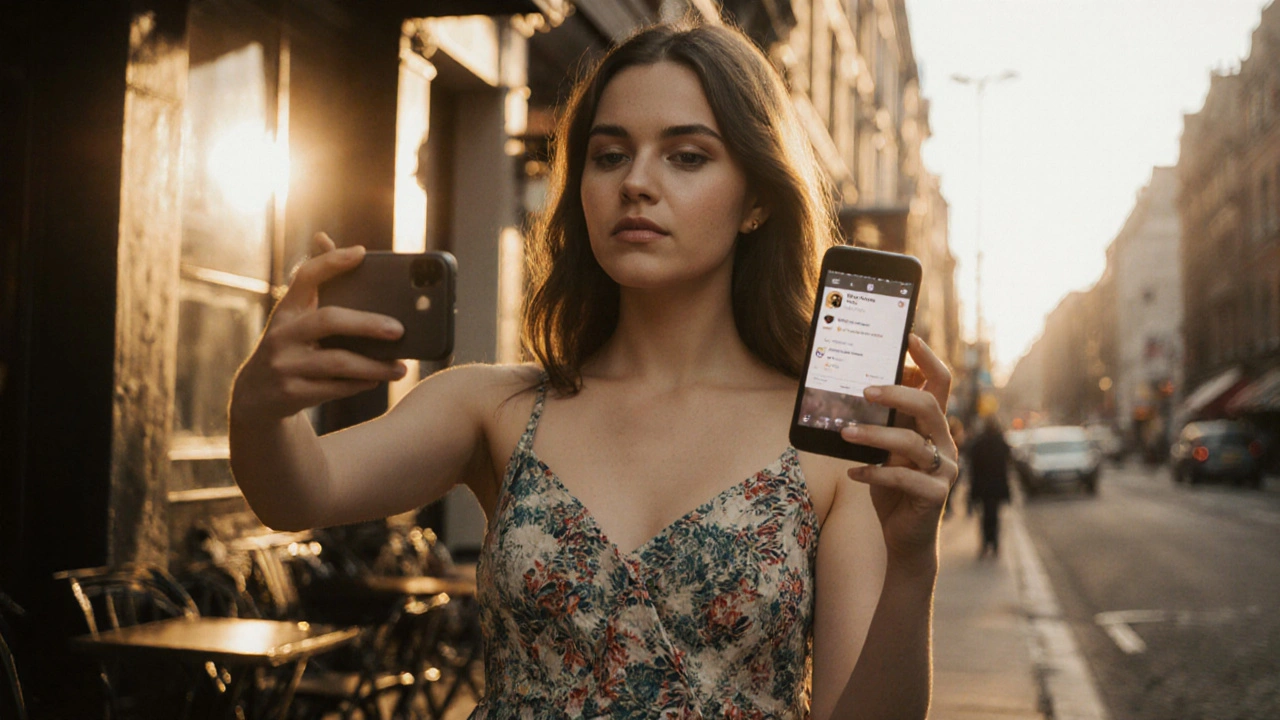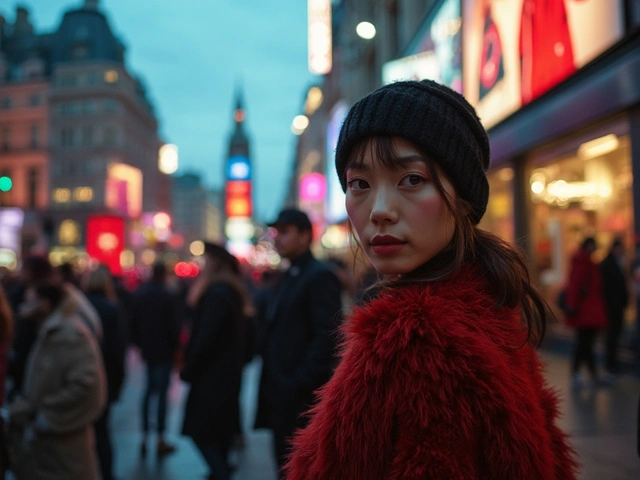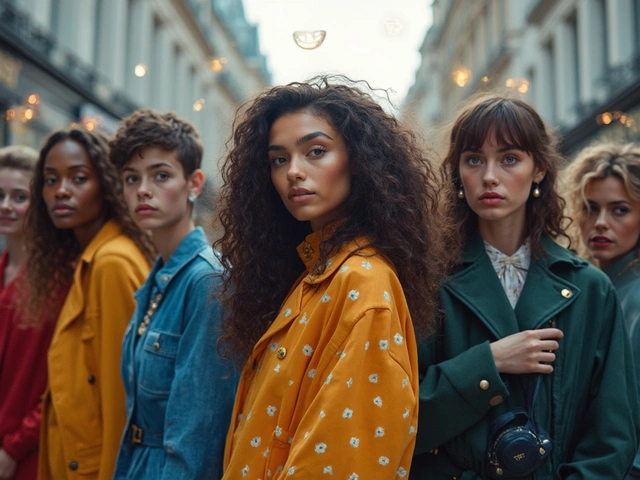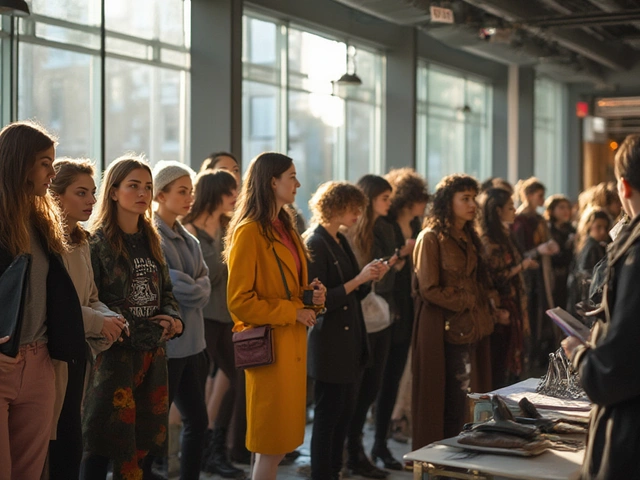Five years ago, a model in London might have waited months for a casting call. Today, she posts a photo at sunrise, tags a brand, and gets a DM from a global fashion house by noon. Social media hasn’t just changed how female models work-it’s rebuilt the entire ladder of opportunity.
The New Runway Is a Feed
Forget the old model scouting process: agencies sending scouts to malls, photo shoots in studio backdrops, glossy magazines as the only gatekeepers. Now, the runway is Instagram. A 19-year-old from Leeds posts a candid shot in a thrifted dress, gets 50K likes, and lands a campaign with Revolve. No agency. No agent. Just a camera, good lighting, and consistency.
Instagram, TikTok, and Pinterest have become the primary portfolios. Brands don’t just look at a model’s past work-they check her engagement rate, comment quality, and follower growth over time. One brand manager told me they’ve hired three models in 2025 based solely on their TikTok content. One had 8,000 followers. Her videos showed real skin texture, natural movement, and honest reactions to clothing. That’s more valuable than 100 studio shots.
Control Over Image and Narrative
Before social media, models were often handed scripts: smile here, look away there, wear this dress, don’t talk about politics. Now, female models control their own image. They choose what they post, how they pose, and what values they align with.
Take Amina, a model from Birmingham who started posting body-positive content in 2022. She didn’t edit out her stretch marks. She didn’t pose in tight designer wear. She wore loose linen, shared her anxiety about industry standards, and tagged #RealSkin. Within a year, she had partnerships with sustainable brands like People Tree and Reformation. She turned her vulnerability into a brand.
This shift means models aren’t just products-they’re content creators. They’re building audiences before they’re signed to agencies. And brands are paying for that audience. A model with 50K engaged followers can earn more per post than a top-tier model in a magazine spread from 2018.
Income Streams Beyond the Runway
Traditional modeling pay was simple: hourly rate for shoots, flat fee for campaigns. Today, female models have multiple income streams. Here’s what it looks like in 2025:
- Brand partnerships - Sponsored posts, affiliate links, product launches
- Digital products - E-books on styling, presets for editing, online workshops
- Content licensing - Selling photos or videos to stock sites like Shutterstock or Adobe Stock
- Merchandise - Launching clothing lines, accessories, or beauty products under their own name
- Agency deals - Still exist, but now often tied to social media performance
A model in Brighton told me she made £12,000 last month. Only £3,000 came from a fashion shoot. The rest? £4,000 from a skincare brand deal, £2,500 from selling her editing presets, and £2,500 from affiliate sales on her blog. She didn’t need a top agency. She just needed to know her audience.
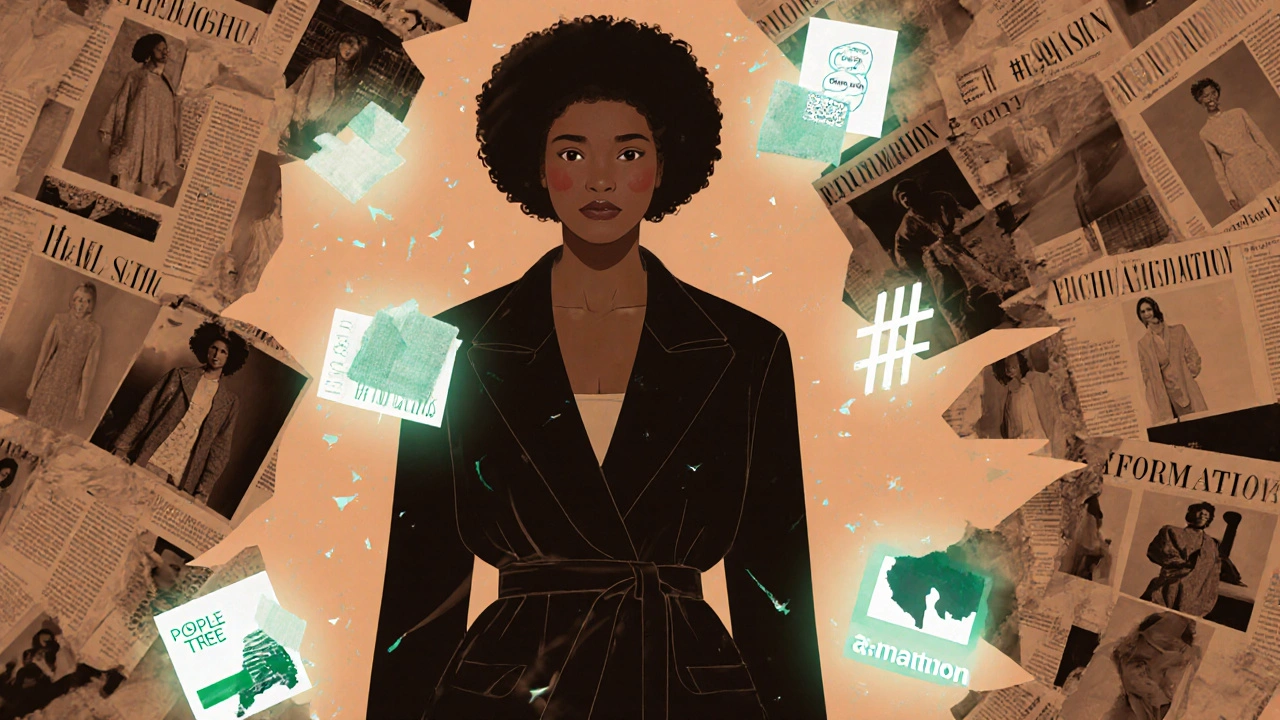
The Algorithm Isn’t Fair-But It’s Accessible
Yes, the algorithm favors certain looks, trends, and aesthetics. Thin, young, white, and photogenic still get more reach. But here’s the twist: social media also lets niche markets thrive.
Curvy models, models with vitiligo, older models, models with disabilities-they’re finding audiences that traditional media ignored. In 2023, a model named Zara, who has Down syndrome, posted a video of her trying on a dress from a size-inclusive brand. It got 2.3 million views. Three weeks later, she was the face of a global campaign.
Platforms like TikTok reward authenticity over polish. A video of a model struggling to zip a dress, laughing, then fixing it? That’s more relatable than a perfectly lit editorial. Brands are catching on. They’re not just chasing virality-they’re chasing connection.
Pressure, Burnout, and the Dark Side
It’s not all glow-ups and brand deals. The pressure to post daily, stay on-trend, and look flawless 24/7 is crushing. One model I spoke with said she deleted her Instagram for three months in 2024 after getting 12,000 comments telling her she was “too thick” for a campaign she’d just booked.
Many female models now hire social media managers, therapists, and content coaches. Some limit posting to three times a week. Others use tools like Later or Hootsuite to schedule content and protect their mental health.
And then there’s the exploitation. Scammers pose as brands. Fake agencies ask for “portfolio fees.” Some photographers demand explicit content in exchange for “exposure.” Female models are learning to read the signs: no real brand pays for photos upfront. No legitimate agency asks for money before signing you.
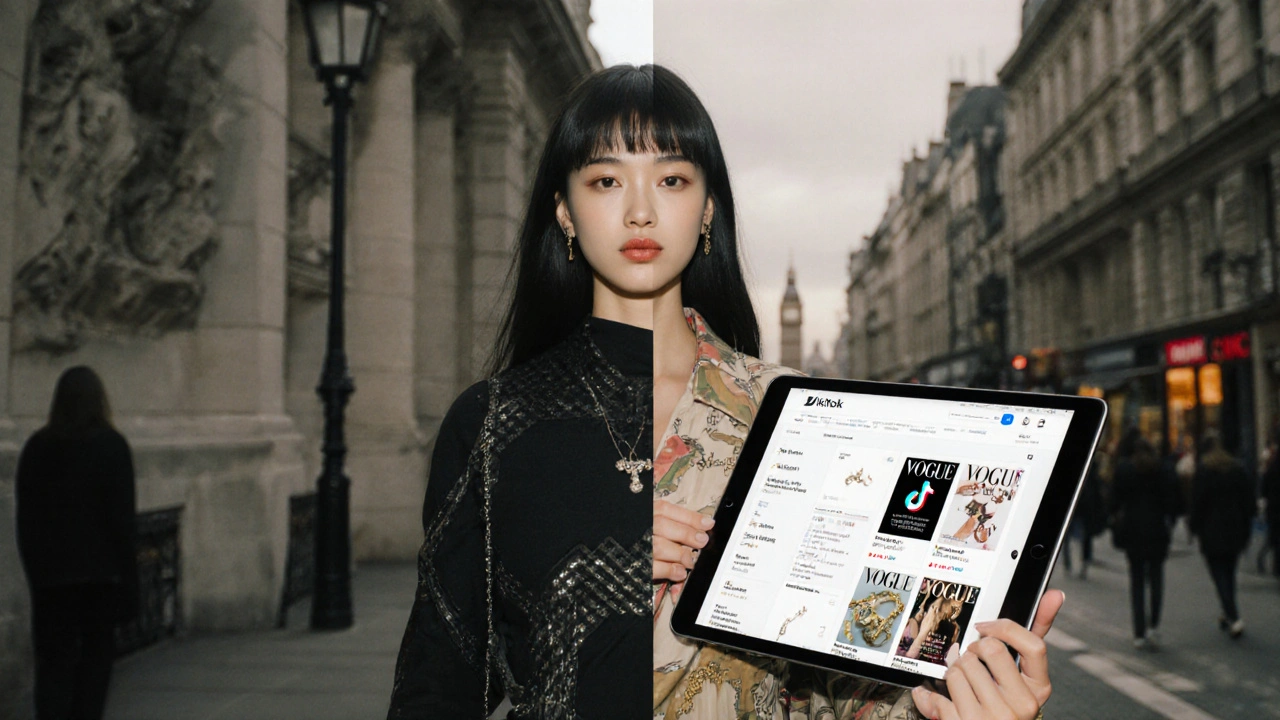
Skills That Matter Now
Being photogenic isn’t enough anymore. The most successful female models today have a mix of skills:
- Content creation - Knowing how to shoot, edit, and caption posts
- Basic video editing - Using CapCut or Premiere Rush to make short clips
- Understanding analytics - Knowing which posts drive engagement, not just likes
- Brand communication - Writing professional emails, negotiating rates, setting boundaries
- Personal branding - Defining what makes them unique and sticking to it
One model in Manchester took a free online course on Instagram algorithms. She started posting at 7 a.m. on weekdays-when her audience was most active. Within six months, her engagement rate jumped from 4% to 11%. That’s the difference between getting ignored and getting hired.
The Future Is Hybrid
The top models in 2025 aren’t just Instagram stars or runway queens. They’re hybrids. They walk for Burberry, then post a behind-the-scenes reel of their makeup routine. They do a photoshoot for Vogue, then sell the same outfit on their own Shopify store.
Agencies are adapting too. Some now require models to have a minimum of 10K followers before signing them. Others have separate divisions for digital influencers and traditional models. A few even hire “social media scouts” who scroll TikTok looking for raw talent.
But the real winners? The ones who treat their feed like a business-not a vanity project. They track their earnings. They reinvest in better lighting and editing tools. They say no to gigs that don’t align with their values. And they know that their worth isn’t measured in followers, but in how much control they have over their own story.
What’s Next for Female Models?
AI-generated models are starting to appear in ads. But real people still win. Why? Because consumers can tell the difference. They want real skin, real emotions, real stories. Social media didn’t replace the modeling industry-it gave it back to the people who were always the heart of it: the models themselves.
The path isn’t easy. But it’s open. And for the first time, a girl with a phone, a good eye, and a voice can build a career without waiting for permission.
Do female models need an agency anymore?
Not always. Many female models now build successful careers independently through social media. Agencies still offer access to big fashion shows and editorial shoots, but they’re no longer the only gateway. Models with strong personal brands often get approached by agencies after going viral. The key is knowing what you want: if you’re aiming for runway and high-fashion magazines, an agency helps. If you want brand deals, content freedom, and direct income, you can skip them.
How much can a female model earn from social media?
Earnings vary widely. A model with 50K followers might earn £200-£800 per sponsored post. Those with 200K+ can earn £2,000-£10,000 per post, depending on engagement and niche. Top creators with loyal audiences also make money from digital products, affiliate links, and merchandise. One model in London made £60,000 in 2024 from her Instagram shop selling handmade jewelry-none of it came from traditional modeling gigs.
Is it harder for plus-size or non-white models to succeed on social media?
It’s been harder historically, but that’s changing fast. Platforms like TikTok reward authenticity, and audiences are demanding diversity. Brands are under pressure to include different body types and ethnicities. Models like Paloma Elsesser and Precious Lee have built massive followings by staying true to their identity. The algorithm doesn’t always favor them at first, but consistent, high-quality content and community engagement break through. It takes longer-but the payoff is stronger loyalty and higher brand trust.
What are the biggest mistakes female models make on social media?
Posting too much without a strategy. Chasing trends instead of building a personal brand. Ignoring analytics and not knowing what content works. Saying yes to every free gig just to get “exposure.” And worst of all-trusting agencies or photographers who ask for money upfront. Real brands pay you. Real agencies earn their cut from your bookings. Never pay to model.
Should female models delete their social media to protect their mental health?
Not necessarily. But taking breaks is essential. Many successful models now schedule “digital detox” weeks, use app timers, or hire social media managers to handle comments and scheduling. It’s not about deleting-it’s about regaining control. Your feed should serve your career, not drain your energy. If scrolling makes you feel worse than confident, it’s time to reset your boundaries.
